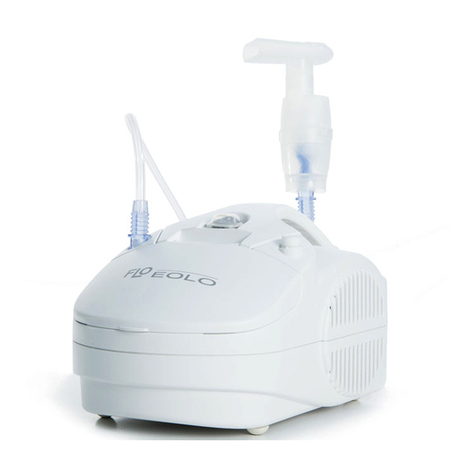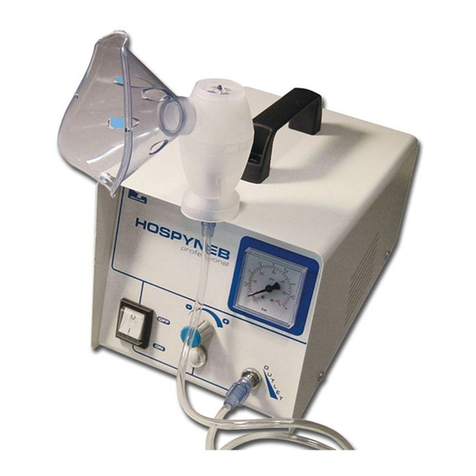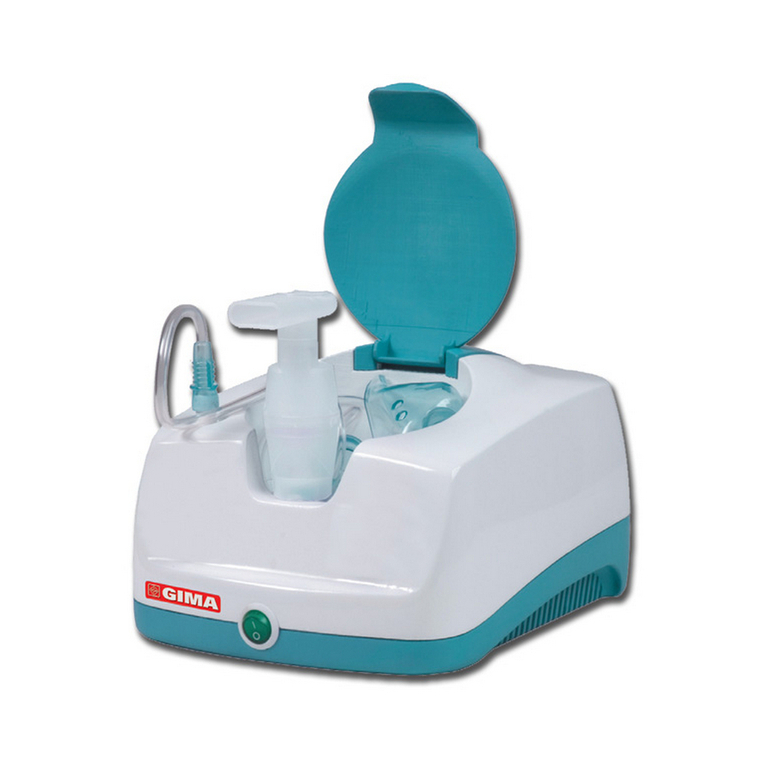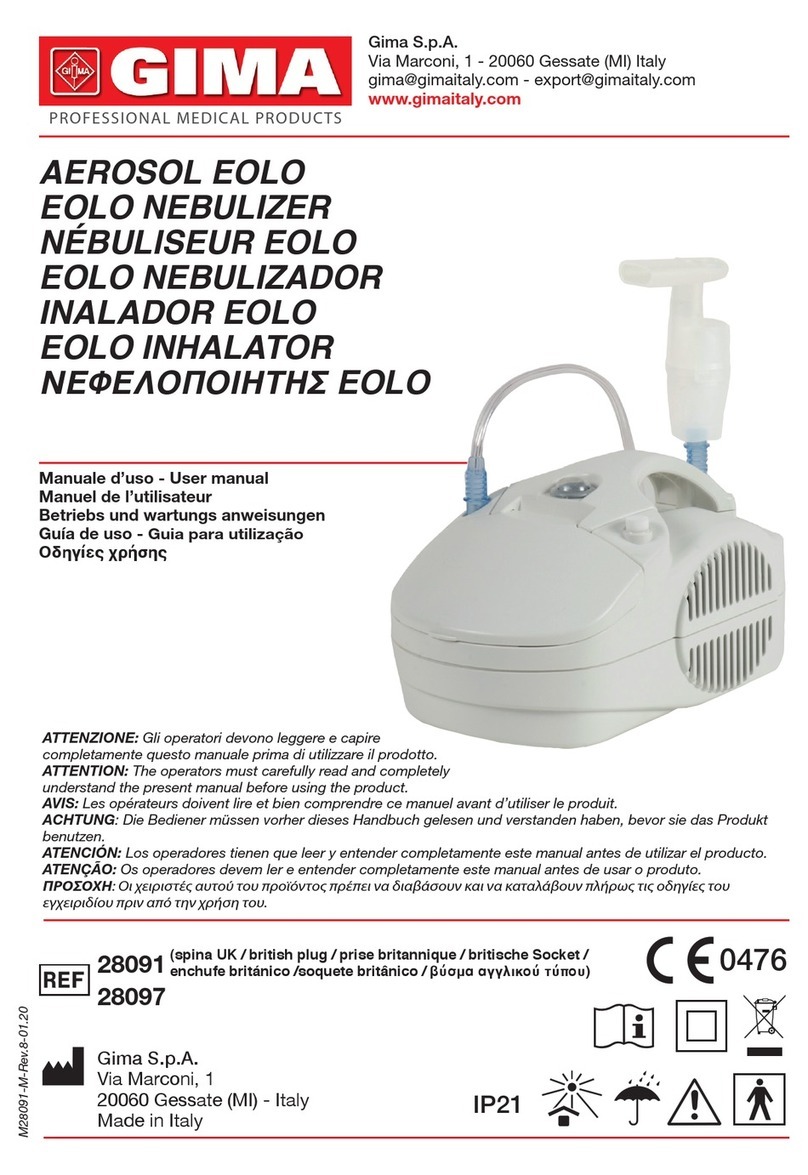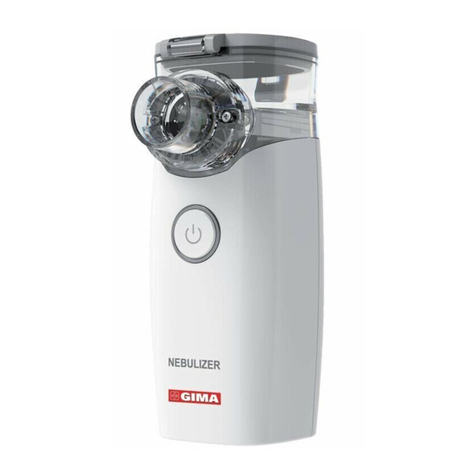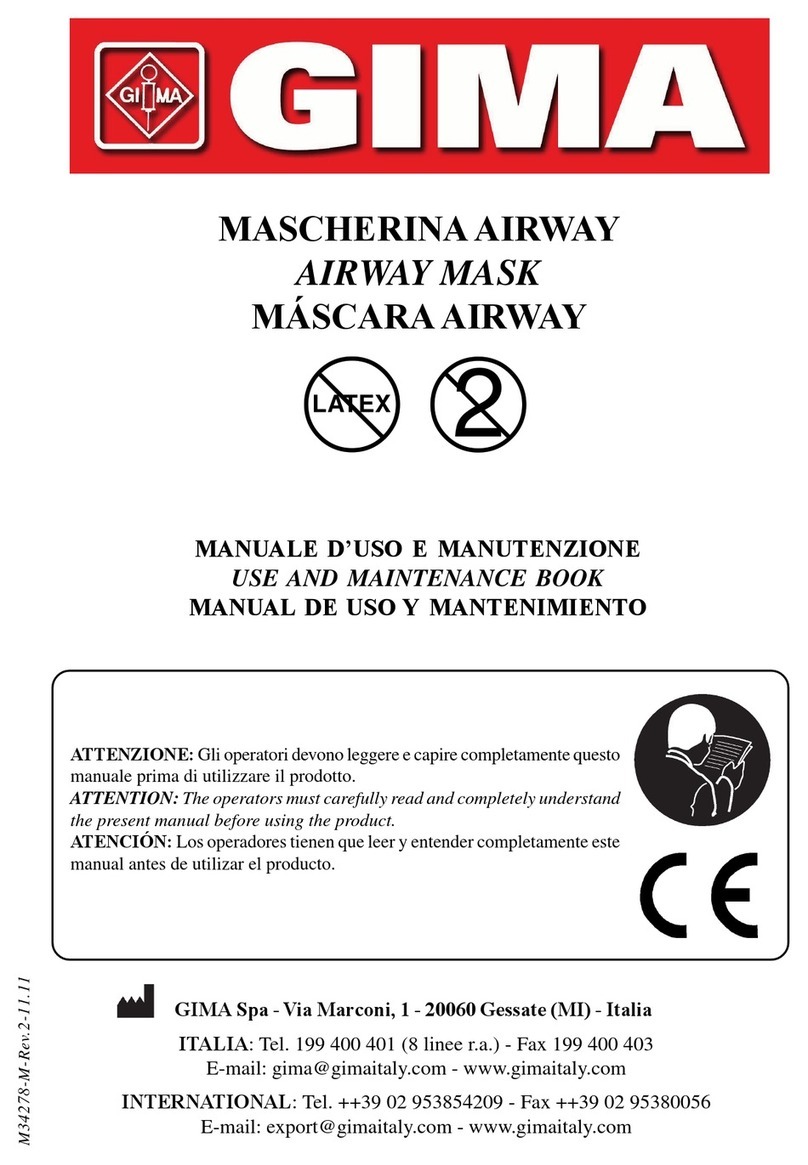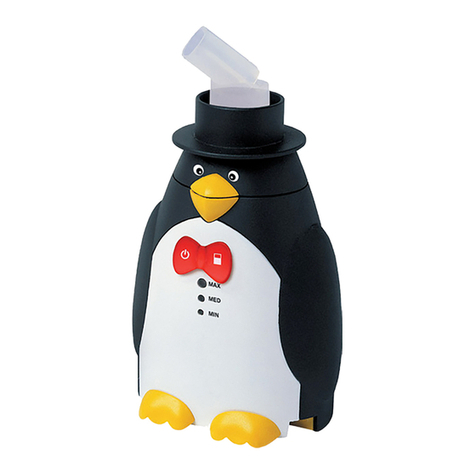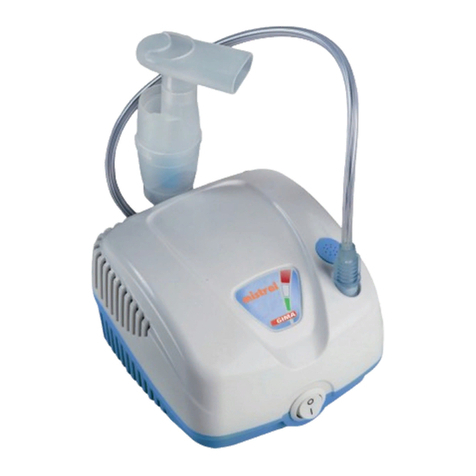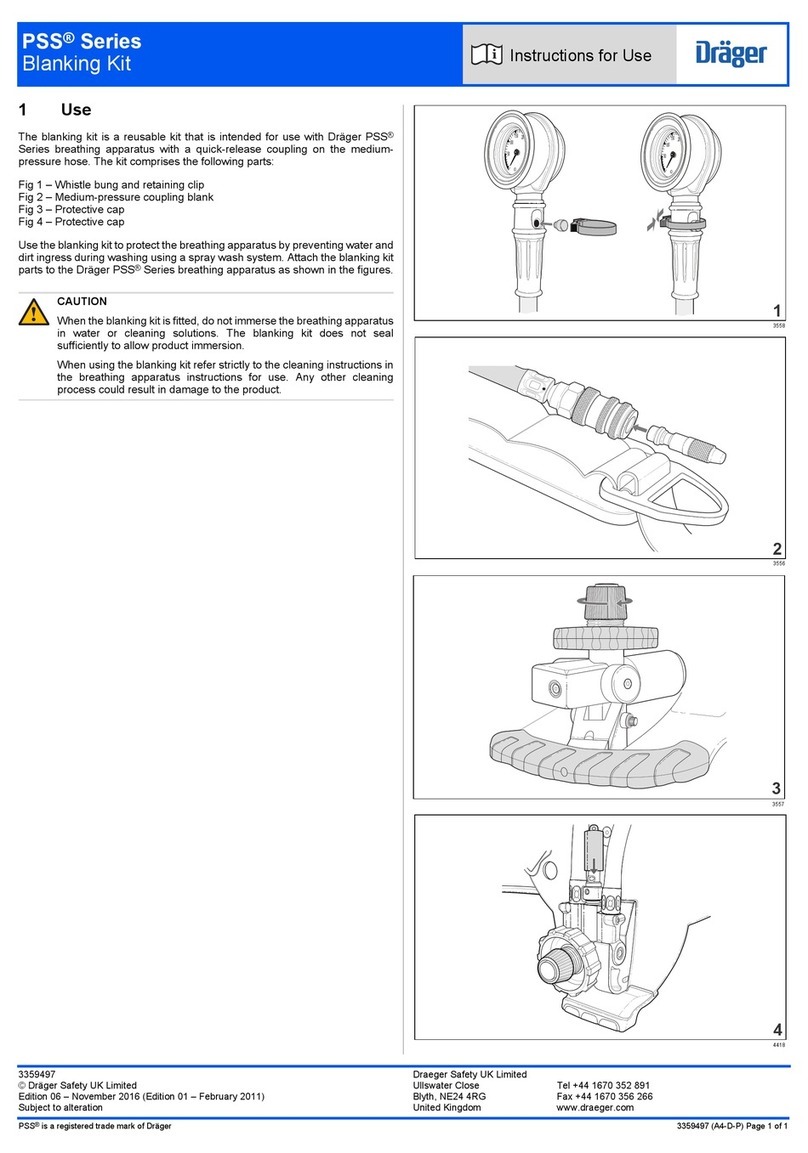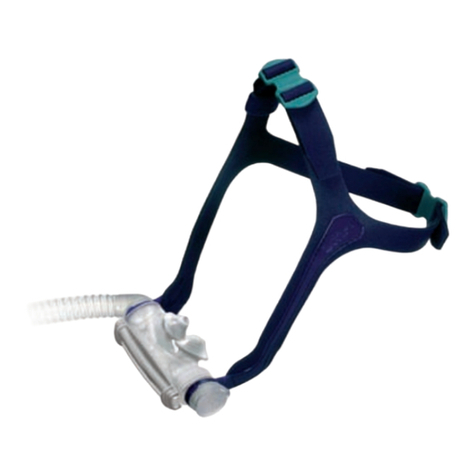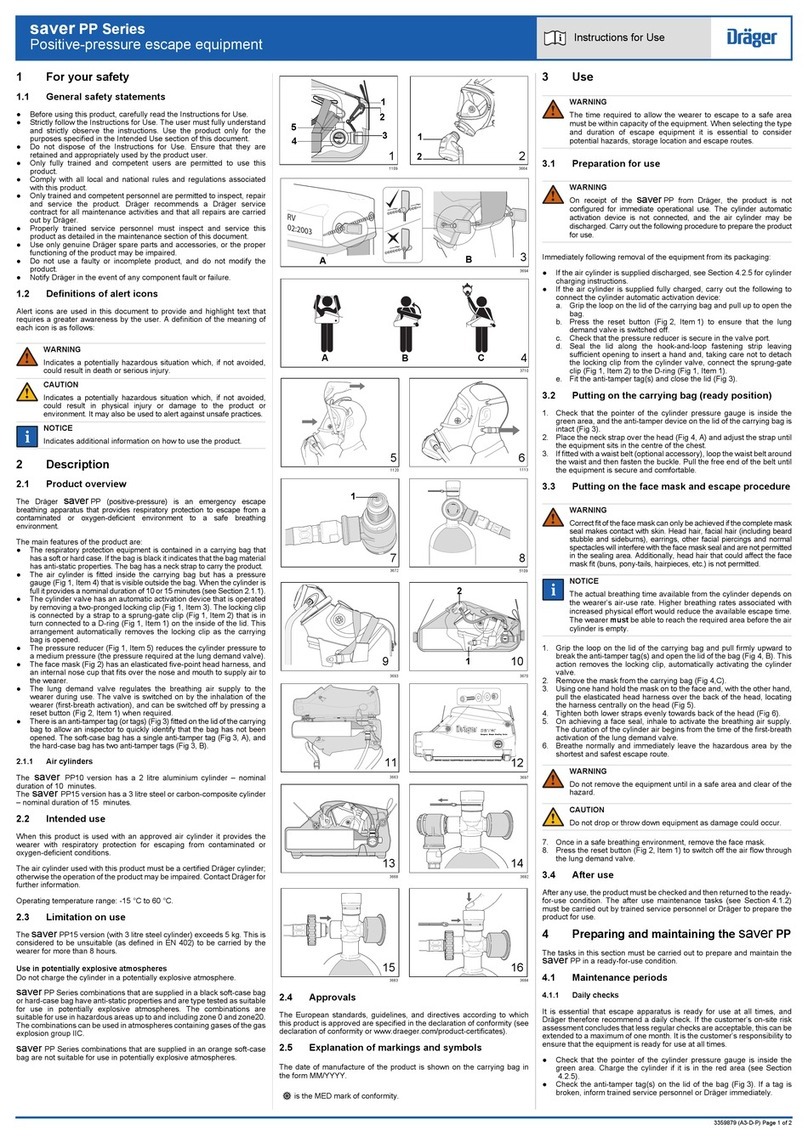
2
CORSIA è un compressore a pistone, ad alimentazione elettrica 230V ~ / 50Hz, ad alte prestazioni per somministrazione
aerosolica di qualsiasi tipo di farmaco, ideale per un utilizzo intensivo ospedaliero e clinico.
Costruito con corpo in materiale plastico ad elevato isolamento termico ed elettrico in conformità alle normative di sicurezza
europee. Il compressore a pistone a secco e ad elevata durata è completato dal nebulizzatore HI-FLO ad alta efficacia per
garantire trattamenti rapidi ed accurati.
Dispositivo progettato per uso continuo. La somministrazione aerosolica è regolabile da parte dell’operatore, tramite apposita
manopola. Il dispositivo, progettato per offrire facilità di trasporto e di utilizzo, è indicato per la nebulizzazione di farmaci
broncodilatatori e antibiotici.
AVVERTENZE GENERALI
PRIMA DI UTILIZZARE L’APPARECCHIO CONSULTARE ATTENTAMENTE IL MANUALE D’USO
PER LA SOMMINISTRAZIONE DEL FARMACO SEGUIRE SEMPRE LE INDICAZIONI DEL PROPRIO MEDICO
NON SMONTARE MAI L’APPARECCHIO.
PER QUALSIASI INTERVENTO CONTATTARE IL SERVIZIO TECNICO GIMA S.p.A.
NORME DI SICUREZZA FONDAMENTALI
1. All’apertura dell’imballo, verificare l’integrità dell’apparecchio, prestando particolare attenzione alla presenza di danni alle
parti plastiche, che possono rendere accessibili parti interne dell’apparecchio sotto tensione, e a rotture e/o spellature del
cavo di alimentazione. In tali casi non collegare la spina alla presa elettrica.
Effettuare tali controlli prima di ogni utilizzo.
2. Prima di collegare l’apparecchio verificare sempre che i dati elettrici indicati sull’etichetta dati e il tipo di spina utilizzato,
corrispondano a quelli della rete elettrica a cui si intende connetterlo.
3. Nel caso la spina in dotazione all’apparecchio sia incompatibile con la presa della rete elettrica, rivolgersi a personale
qualificato per la sostituzione della spina con altra di tipo adatto. In generale, è sconsigliabile l’utilizzo di adattatori,
semplici o multipli e/o prolunghe. Qualora il loro utilizzo fosse indispensabile, è necessario utilizzare tipi conformi alle
norme di sicurezza, facendo comunque attenzione a non superare i limiti massimi di alimentazione sopportati, che sono
indicati sugli adattatori e sulle prolunghe.
4. Non lasciare l’apparecchio inutilmente inserito: staccare la spina dalla rete di alimentazione quando lo stesso non è
utilizzato.
5. Rispettare le norme di sicurezza indicate per le apparecchiature elettriche ed in particolare:
-Utilizzare solo accessori e componenti originali forniti dal costruttore al fine di garantire la massima efficienza e
sicurezza del dispositivo;
-Non immergere mai l’apparecchio in acqua;
-Posizionare l’apparecchio su superfici piane e stabili;
-Posizionare l’apparecchio in modo da evitare di occluderne le prese d’aria poste sul retro;
-Non utilizzare l’apparecchio in ambienti in cui presenti miscele anestetiche infiammabili con aria, con ossigeno o
protossido d’azoto;
-Evitare di toccare l’apparecchio con mani bagnate e comunque evitare sempre che l’apparecchio venga a contatto
con liquidi;
-L’impiego di questo apparecchio da parte di bambini e/o incapaci richiede sempre una attenta sorveglianza di un
adulto con piene facoltà mentali;
-Il dispositivo medico, e soprattutto il nebulizzatore, deve essere tenuto fuori dalla portata dei bambini in quanto
contiene parti che potrebbero essere ingerite.
-Non lasciare collegato l’apparecchio alla presa di alimentazione quando non utilizzato;
-Non tirare il cavo di alimentazione per staccare la spina, ma impugnare quest’ultima con le dita per estrarla dalla
presa di rete;
-Conservare ed utilizzare l’apparecchio in ambienti protetti dagli agenti atmosferici e a distanza da eventuali fonti di
calore;
-Dispositivo non adatto per anestesia e ventilazione polmonare.
6. Per operazioni di riparazione rivolgersi esclusivamente ad servizio tecnico GIMA S.p.A. oppure a centro assistenza
tecnica autorizzato dal costruttore e richiede l’utilizzo di ricambi originali. Il mancato rispetto di quanto sopra può
compromettere la sicurezza del dispositivo.
7. Questo apparecchio deve essere destinato esclusivamente all’uso per cui è stato progettato e come descritto
all’interno del presente manuale. Per tanto deve essere utilizzato come sistema per aerosolterapia.
Ogni uso diverso da quello cui l’apparecchio è destinato è da considerarsi improprio e quindi pericoloso; il costruttore
non può essere considerato responsabile per danni causati da un improprio, erroneo e/od irragionevole o se
l’apparecchio è utilizzato in impianti elettrici non conformi alle vigenti norme di sicurezza.
8. Il dispositivo medico necessita di particolari precauzioni per quanto concerne la compatibilità elettromagnetica e deve
essere installato e utilizzato secondo le informazioni fornite con i documenti di accompagnamento;
9. Alcuni componenti dell’apparecchio hanno dimensioni ridotte da poter essere inghiottite dai bambini; conservare quindi il
dispositivo fuori dalla portata dei bambini;
10. Ricordate di:
-utilizzare questo apparecchio solo con farmaci prescritti dal proprio medico;
-effettuare il trattamento utilizzando solo l’accessorio indicato dal medico a seconda della patologia.
